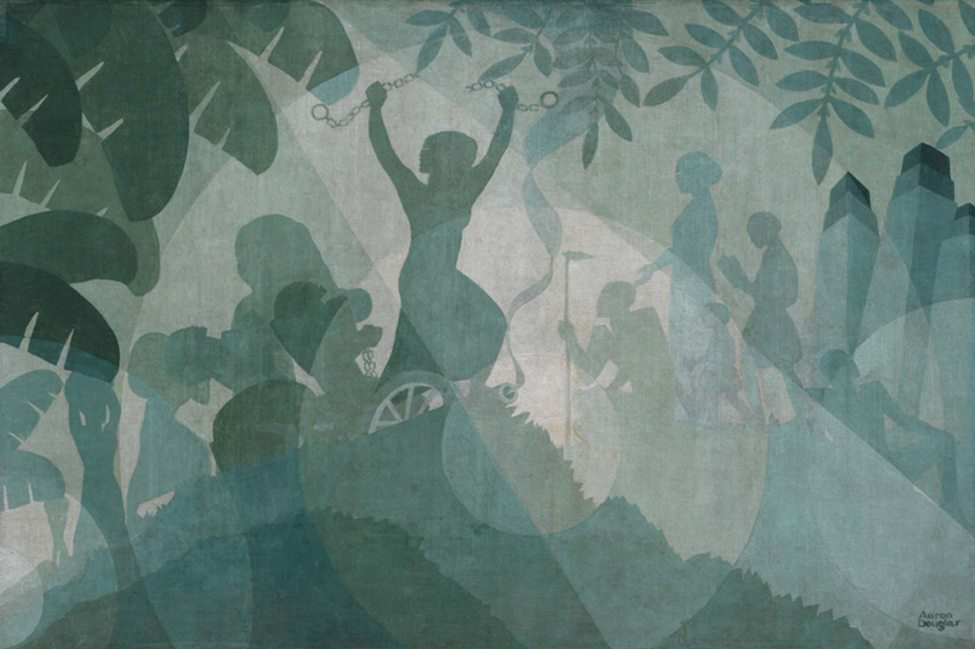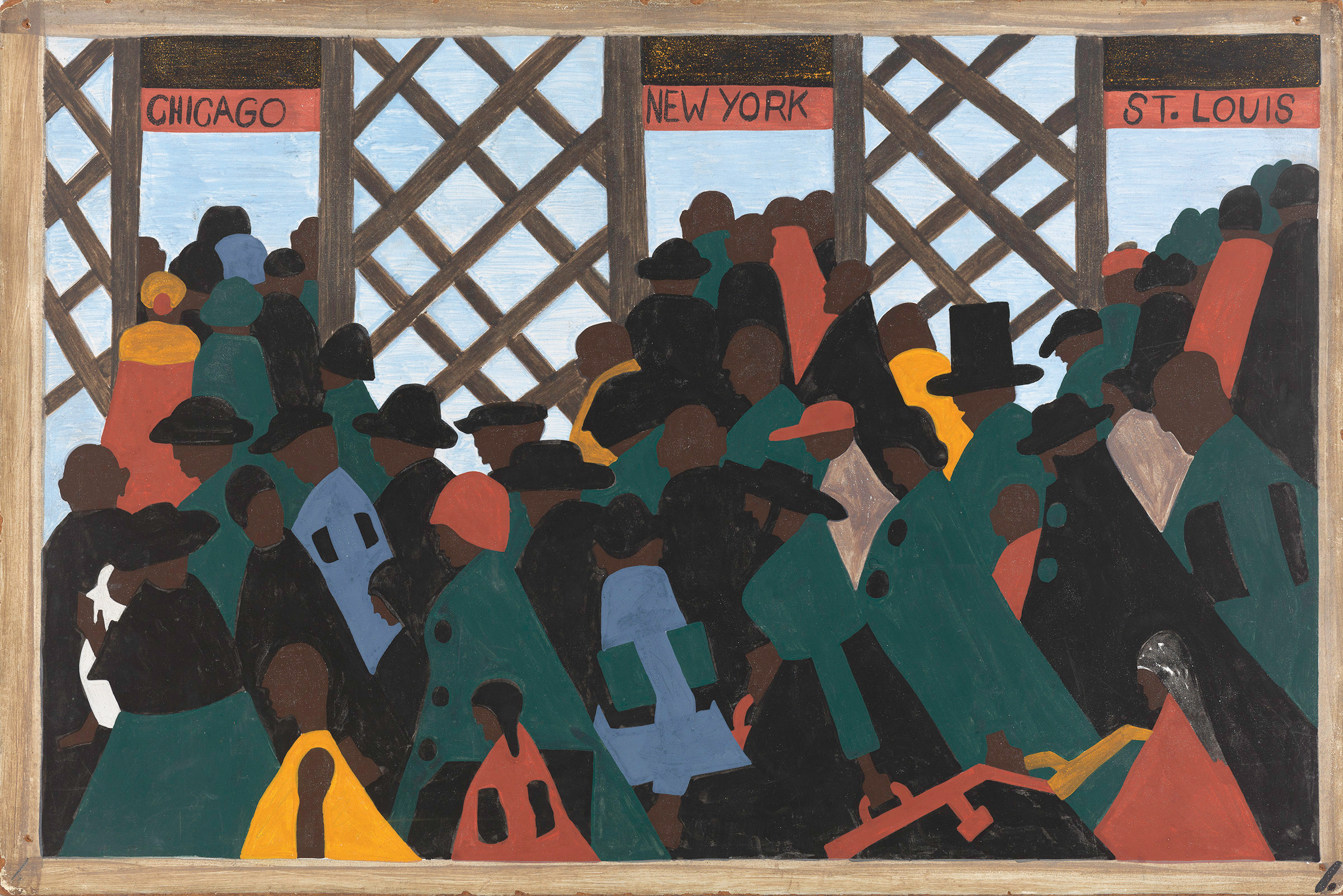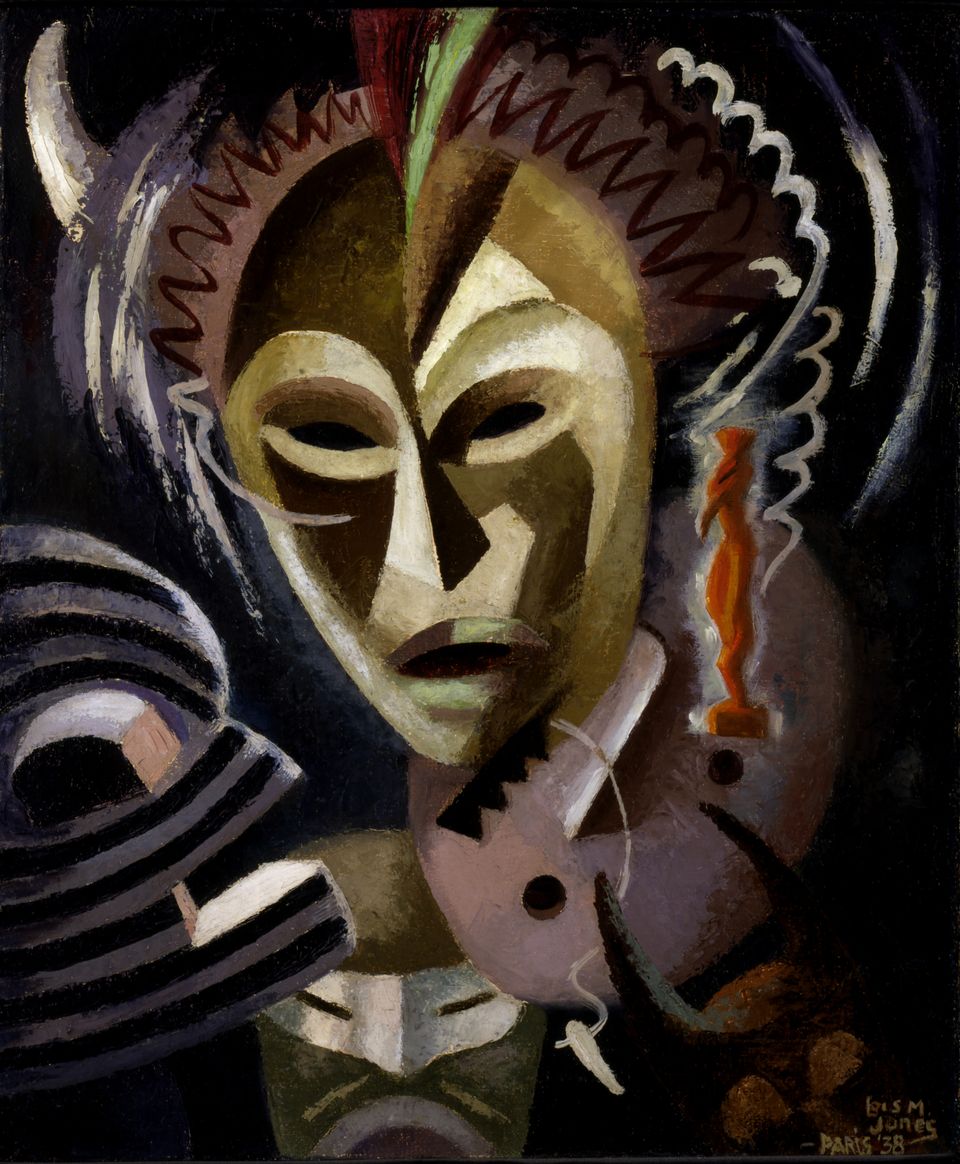The Early Modern Era: The Harlem Renaissance
The Harlem Renaissance and Its Influence on Early Modern Art
Background Information
The influence of African Americans on Early Modern Art is seen through the works produced in the Harlem Renaissance in the 1920s and 1930s. The Harlem Renaissance took place due to the Great Migration in the early 1900s. After the conclusion of the Civil War, thousands of African Americans moved north in hopes to encounter greater economic opportunities than what they had previously experienced in the South. A larger population of the migrants were middle class and settled in the district of Harlem, located in New York City. The city of Harlem quickly transformed into a rich cultural and intellectual center where musicians, artists, and writers had the opportunity to share and take pride in their Black culture.
This type of Early Modern Art strove to depict African American life to its viewers. Artists strove to incorporate their valuable identity and culture to rise up against the harmful stereotypes they were given in America. Different styles of art in this Modern Era portrayed personal images that reflected the world of change around them. All of these masterpieces adhere to the Early Modern Art Era because they feature individualistic expression and promote innovation in the artistic sphere. Aaron Douglass, Jacob Lawrence, and Lois Mailou Jones crafted distinctly beautiful works of Early Modern Art that were directly influenced by the Harlem Renaissance.
Virtual Exhibit
Harriet Tubman by Aaron Douglas in 1931

The first piece of art created in the midst of the Harlem Renaissance is titled Harriet Tubman. It was created by Aaron Douglas in 1931 and is located in a mural at the Bennett College Art Gallery in Greensboro, North Carolina. The exact place of creation is undetermined but is thought to have been created somewhere in New York. This oil painting features the notable African American female figure, Harriet Tubman, who freed hundreds of slaves through the Underground Railroad. This piece is tied to the ideals of the Harlem Renaissance because Douglass creates a complete narrative piece that highlights how African Americans overcame injustice in America. On the left we see the past exemplified by bondage, the present in the middle with the abolitionist movement and emancipation, and finally the right highlights the newfound opportunities and accomplishments earned. Douglass provided those in the Harlem Renaissance with a new sense of self-determination and a new view of the American Dream.
Three notable art elements that are found in Douglass' work include the illusion of light, his use of blue and green hues, and the implementation of multiple tones. The illusion of light and the use of concentric circles kind of go hand and hand. Circles of varying tones and colors were incorporated to create a sense of spotlight on the main character, Harriet Tubman. The illusion of light draws the onlooker's eye immediately to the central figure, paying tribute to all that she did in helping African American individuals. Only using green and blue hues in this piece establishes the artist's more mature artistic style and wonderfully ties the painting together. Finally, the multiple tones, aside from light, also create a sense of layering that is crucial to fulfilling the narrative goal.
The Migration of the Negro by Jacob Lawrence in 1941

The second painting that was greatly influenced by the Harlem Renaissance is titled The Migration of the Negro by Jacob Lawrence in 1941. He painted this piece in Harlem, New York, the same place he learned to be an artist, and is a part of his Migration Series which was funded by the WPA. The influence of the Harlem Renaissance on his art is still greatly prominent. Lawrence depicts a scene of a group of African Americans bustling to move North in hopes to find a greater amount of economic opportunity and freedom from rampant oppression. Not only does this piece adhere to the influence of the Harlem Renaissance by putting forth an image of African American history, but it also has a very important personal aspect to it. The awe-inspiring picture that Lawrence created pays tribute to the journey his own parents made from South Carolina to New York.
His masterful use of color, patterning of clothing, and angular form of figures distinguish this piece from others. The utilization of vibrant colors like green, red, and yellow draw the eye of the viewer to specific figures, while those dressed in black tend to blend in with the crowd. There is a pattern of clothing in the crowd of people, similar color schemes and styles, which emphasizes the idea of the united African American community. Finally, all of the figures take on an angular form which contributes to Lawrence's artistic style of dynamism. The distinctive form adds both motion and energy to the scene as a whole.
Les Fetiches by Lois Mailou Jones in 1938

Finally, Les Fetiches by Lois Mailou Jones in 1938 is known to be a painting that adheres to the ideals of the Harlem Renaissance and the Early Modern Art Era. This piece is found displayed on the walls of the Smithsonian American Art Museum in Washington, D.C., and was made during her time in France. Les Fetiches features five overlapping masks taken from different African tribes presenting Jones' cultural heritage and ancestry. She chose to incorporate five distinct masks to highlight the diversity of culture across African American history.
Jones adds an important element of light by using white highlights throughout the image. These important touches are found on the curve of the horn and on the eye of the striped mask to name a few examples. The varying tones of colors create a pattern on the central mask but also contribute an element of shading. It is almost as if there is an illusion of light shining on the middle mask due to the combination of multiple color tones. Lines are also essential to this piece because they act as a representation of the physical parts of the mask. The red and green textured strokes could be correlated to feathers and the maroon squiggles imply a material that takes up the volume. Jones does a beautiful job of portraying the diversity of her people in this breathtaking piece.
Aesthetic Appreciation
All three of the works presented were awe-inspiring in their own way to me. I found Douglas' piece to be very powerful through the left-to-right narrative he delicately painted and absolutely loved his utilization of the concentric circles. Lawrence's piece was filled with distinct angular forms and represented the personal story of his parents migrating North. Finally, Jones' depiction of ancestry and cultural heritage was interesting to research, and the illusion of light was wonderfully done. All three works have a feeling of preservation and power. The Migration of the Negro is a piece I would own due to its rich meaning and history. Every single one of these paintings and artists was notably influenced by the Harlem Renaissance and I thoroughly enjoyed learning more about them.
Resources
“Aaron Douglas Paintings, Bio, Ideas.” The Art Story, https://www.theartstory.org/artist/douglas-aaron/#:~:text=In%201934%2C%20Douglas%20was%20commissioned,Progress%20Administration%20Federal%20Art%20Project.
“A New African American Identity: The Harlem Renaissance.” National Museum of African American History and Culture, 14 Mar. 2018, https://nmaahc.si.edu/explore/stories/new-african-american-identity-harlem-renaissance.
“Loïs Mailou Jones.” Smithsonian American Art Museum, 2023, https://americanart.si.edu/artist/lo%C3%AFs-mailou-jones-5658.
“The Migration Series, Panel No. 1: During World War I There Was a Great Migration North by Southern African Americans.” The Phillips Collection, https://www.phillipscollection.org/collection/migration-series-panel-no-1-during-world-war-i-there-was-great-migration-north-southern.
Zucker, Dr. Steven, and Dr. Beth Harris. “Jacob Lawrence, the Migration Series.” Smarthistory, https://smarthistory.org/jacob-lawrence-the-migration-series/.
Hi Libbey, your blog is done very nicely! The artwork you have selected is very powerful and holds historic value, something that really appeals to me is the illusion of light in "Harriet Tubman." The spotlight on the main character shows how visually enticing this piece is. In "Migration of the Negro" the forms of the characters are done in a uniting way, there are many common colors of apparel that show community which is powerful. The themes seen in these works are very important, the theme I see most recurring is unity, determination, and power, these themes capture what the Harlem Renaissance is about. The shading elements used in Les Fetiches are done really well, it adds three dimensional depth in the masks very well.
ReplyDeleteHi Libbey! Great blog post of the early modern era. I think you put in great artwork choices of this era and explained very well and neat about the traits, the theme art elements, the background history of it, and how you personally think of the artwork. My favorite artwork would have to be "Harriet Tubman". I liked that one a lot because of the lighting, shadow, the emotions that were left in the artwork.
ReplyDeleteHello Libbey, excellent work on your post, I was interested in the Harlem Renaissance, so I am glad you chose to write about it. The first painting that you show is exciting. Harriet Tubman does not contain much contrast with the color pallet consisting of cool tones. I like the contrast that Douglas created by using these very cool and calming colors in opposition to the very intense scene. Additionally, I enjoy Douglas's unique circular highlights, as it almost looks like a lens flare. The narrative comes across quite strongly and creates a very graphic image. The flat-colored, simply shaped leaves in the foreground remind me of the paper cut-outs of Henri Matisse. Lawrence’s The Migration of the Negro is very visually fascinating. The use of flat colors and limited color pallets was the right choice for this piece; if much more detail were added, you would start to lose the different elements. The restricted colors also help to give the image a cohesive feeling. This incredible collection of people on their journeys to start new lives reminds me of Martha Walter’s series of people arriving at and their travels to Ellis Island, especially Listening to the Call of Names to Be Released. Les Fetiches by Lois Mailou Jones is much more detailed and chaotic than the other works you presented. I think this is a very fitting thought because it aids in showing that although the Harlem Renaissance was helping to enlighten others about the rich culture and struggles of the African American community and that conditions were improving for them, they still faced a great deal of discrimination. The depiction of so many different masks also makes me think that the artist was trying to represent all the different “masks” the black community had to wear, depending on who they were around.
ReplyDeleteHello Libbey,
ReplyDeleteI really enjoyed reading your post and the pieces you chose to discuss were some that I really enjoyed viewing. Though the stories behind them might be on the more saddening side, I find these pieces to be beautiful, especially Les Fetiches. I find the shapes in this piece to be very gorgeous and I love how they all flow together and how the choice of colors in the piece brings everything together. I think you did a really great job at analyzing this piece and I hadn't even thought of how the red and green streak adds volume to the piece, great catch! It is so fascinating how these abstract pieces tell so much detail and how you can pick out a new thing each time you look at them.
Hi Libbey, what a thorough analysis of the time period! I absolutely love each artwork you chose to discuss. The first one particularly is the most visually appealing with a monochromatic color story and I adore the "layering" quality that you expounded on because it adds a nice depth. While the second piece isn't monochromatic, it does have a clear color theme throughout the painting that is quite striking. As for the third piece you chose, I enjoy the overall depth of the painting and the textured details surrounding the masks. Each painting is a great representation of the Harlem Renaissance and I enjoyed learning more through your post.
ReplyDeleteThis was an excellent examination of the Harlem Renaissance! I really like how you go in depth on not only the themes represented in each piece, but also the history and experiences of the artists who made them. The unique visuals of each work are incredibly eye-catching, and I love the use of silhouettes, abstract shapes, and vibrant colours to portray figures and emotion. I'm glad you chose them, and this topic, as it encourages us to view and appreciate more African American artists, and gives us a glimpse of the beautiful art made during the Harlem Renaissance!
ReplyDelete